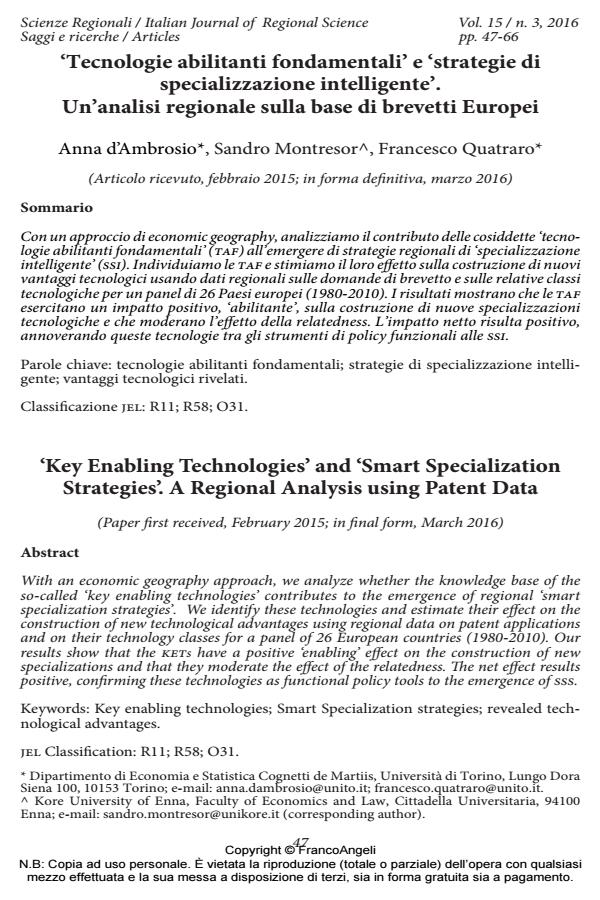‘Tecnologie abilitanti fondamentali’ e ‘strategie di specializzazione intelligente’. Un’analisi regionale sulla base di brevetti Europei
Titolo Rivista SCIENZE REGIONALI
Autori/Curatori Anna D'Ambrosio, Sandro Montresor, Francesco Quatraro
Anno di pubblicazione 2016 Fascicolo 2016/3
Lingua Italiano Numero pagine 19 P. 47-65 Dimensione file 289 KB
DOI 10.3280/SCRE2016-003003
Il DOI è il codice a barre della proprietà intellettuale: per saperne di più
clicca qui
Qui sotto puoi vedere in anteprima la prima pagina di questo articolo.
Se questo articolo ti interessa, lo puoi acquistare (e scaricare in formato pdf) seguendo le facili indicazioni per acquistare il download credit. Acquista Download Credits per scaricare questo Articolo in formato PDF

FrancoAngeli è membro della Publishers International Linking Association, Inc (PILA)associazione indipendente e non profit per facilitare (attraverso i servizi tecnologici implementati da CrossRef.org) l’accesso degli studiosi ai contenuti digitali nelle pubblicazioni professionali e scientifiche
Con un approccio di economic geography, analizziamo il contributo delle cosiddette ‘tecnologie abilitanti fondamentali’ (taf) all’emergere di strategie regionali di ‘specializzazione intelligente’ (ssi). Individuiamo le taf e stimiamo il loro effetto sulla costruzione di nuovi vantaggi tecnologici usando dati regionali sulle domande di brevetto e sulle relative classi tecnologiche per un panel di 26 Paesi europei (1980-2010). I risultati mostrano che le taf esercitano un impatto positivo, ‘abilitante’, sulla costruzione di nuove specializzazioni tecnologiche e che moderano l’effetto della relatedness. L’impatto netto risulta positivo, annoverando queste tecnologie tra gli strumenti di policy funzionali alle ssi.
Parole chiave:Tecnologie abilitanti fondamentali; strategie di specializzazione intelligente; vantaggi tecnologici rivelati.
Jel codes:R11; R58; O31
Anna D'Ambrosio, Sandro Montresor, Francesco Quatraro, ‘Tecnologie abilitanti fondamentali’ e ‘strategie di specializzazione intelligente’. Un’analisi regionale sulla base di brevetti Europei in "SCIENZE REGIONALI " 3/2016, pp 47-65, DOI: 10.3280/SCRE2016-003003